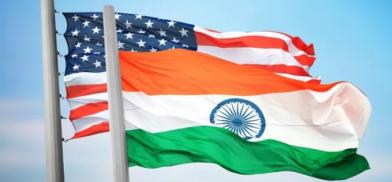If Trump returns, will India-US economic ties take a hit?
The significance of American investment is that it plays an important role in transforming India’s industrialization and paving the path to challenge China to become the next-generation supply chain hub.

India-US economic relations can likely run into troubled waters if former US President Donald Trump comes back to power in the presidential election in November 2024. Various opinion polls forecast Trump's return, with many in the country and worldwide fearing a return to protectionism and tariff wars. Trump has committed to impose a 10 percent import tariff on all imports and 60 percent on imports from China if he is back in the White House for a second term.
America is a global-buying country; it is the world's biggest importer. India too is a big importer. It is said that Trump will first impose a 10 percent tariff on all imports as part of his "America First" trade policy and then spike duty on such products which hurt US industries most.
The US is the largest trading partner of India. Trade with the US is characterized by India exporting more and importing less, while trade with China, the second biggest trade partner, is driven by importing more and exporting less.
Besides being the largest trading partner, the US also is the third largest foreign investor. In 2022-23, the US accounted for 17.4 percent of India’s global exports. India exported mainly four main product groups to the US - diamonds and jewelry; apparel and textiles; oil refinery products and pharmaceuticals. Together, they accounted for 40.3 percent of India’s total exports to the US.
Potential impact
If Trump imposes a 10 percent import tariff, imports of these four product groups are likely to be affected. Nevertheless, the magnitude of the impact depends upon the strength of India's competitors in the US market.
The biggest product group of India’s export basket to the US is diamond and jewelry. It accounted for nearly 16 percent of India’s total exports in 2022-23. India is followed by Israel and Belgium. Here, India has an edge over its competitors. It is the largest cutting and polishing center of rough diamonds in the world owing to the special skills of its artisans. High-value US clients prefer customized designs from India, which can score over competitors like Israel and Belgium.
Apparel and textiles are another major product group in the basket of exports to the USA. India is the third largest exporter of apparel and textiles to the US after China and Vietnam. Besides trade importance, their exports help SMEs in India to flourish and generate employment opportunities.
Since China may be subject to a 60 percent import tariff, Vietnam will be a tough competitor to India. Nevertheless, there is a space for India to edge out Vietnam. Most of the inputs for apparel and textiles in Vietnam come from China. In contrast, India procures inputs domestically.
During the previous Trump era (January 2017 to January 2020), India faced high import tariffs on aluminum and steel. Further, it was withdrawn from the benefits of the GSP scheme (Generalized Scheme of Preference). This left a major dent in India’s export basket to the US. India’s exports plummeted by 2.76 percent in 2020 -21 against a spurt of 13.42 percent in 2017-18.
India’s challenges
Should India resort to reconciliation or retaliation to Trump’s tariff war? The US plays a key role in India’s external economy. As it is the biggest export destination, it accrues multiple benefits to the Indian economy. It helps narrow down the trade deficit owing to larger exports than imports and will have a cascading impact on the current account deficit in its balance of payments.
The US is also the biggest destination for IT service exports from India. Besides, it has become the largest source of employment generation in IT services in the country.
However, India is of meager importance to the overall US economy and trade. It accounted for a mere 2.3 percent of the US' total exports and 2.6 percent of the US' total imports in 2021. Eventually, any retaliation by India will have a negligible impact on the USA’s global business.
The significance of American investment is that it plays an important role in transforming India’s industrialization and paving the path to challenge China to become the next-generation supply chain hub. Apple’s shifting of iPhone manufacturing to India from China, along with Foxconn’s massive investment are cases in point. American semiconductor major Micron is likely to set up India’s first semiconductor plant. This bodes well for India to be the prime challenger to China for the global supply chain. Any retaliatory approach that the next government may contemplate to counter Trump’s tariff war may cost India more than it benefits.
(The writer is an Indian trade consultant and analyst. Views are personal. He can be contacted at subratamajumder0604@gmail.com)










Post a Comment